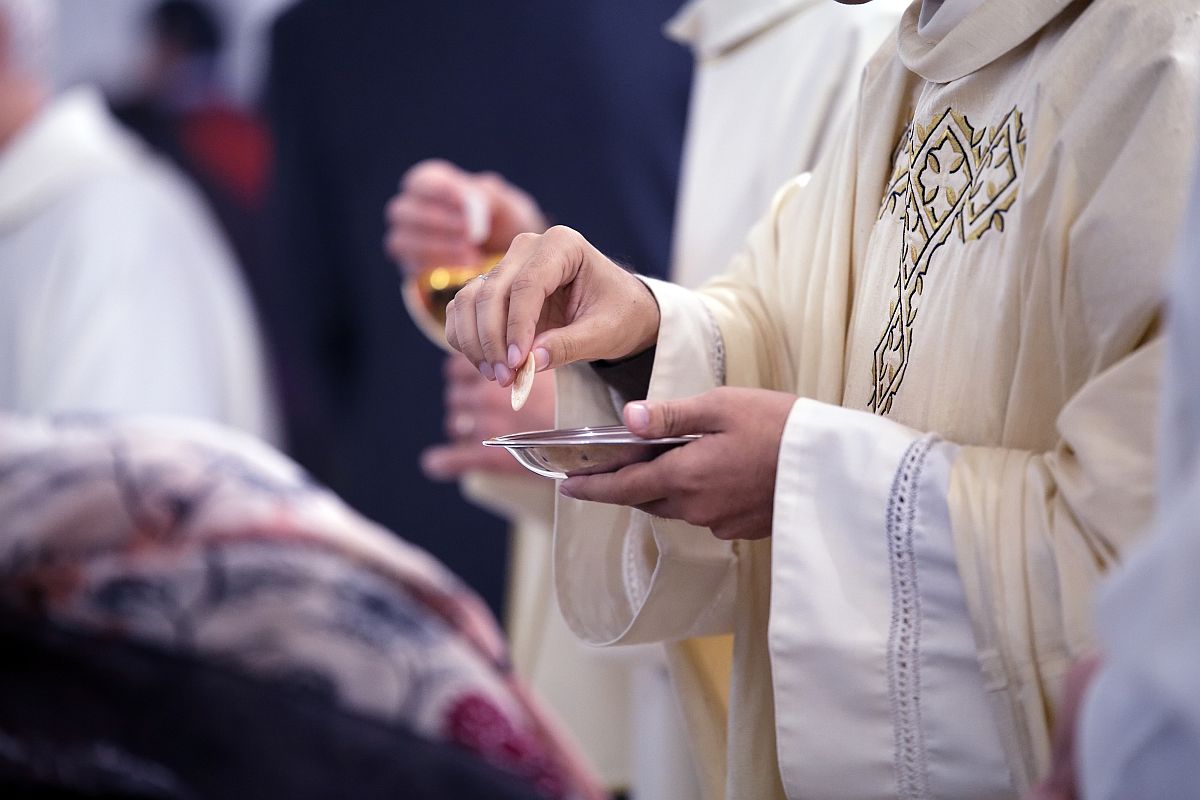Easter is the most revered day of the Christian calendar even more important than Christmas as it is celebrated by churches worldwide to commemorate the resurrection of Jesus Christ.
This year, Easter Sunday falls on April 21.
Advertisement
As described by the New Testament, Jesus rose from the dead on the third day of his burial after his crucifixion by the Romans in AD 30.
The date of the festival is not fixed. It has come to be the first Sunday after the ecclesiastical full moon that occurs on or soonest after 21 March. It usually falls between March 21 and April 25.
Jewish Christians, the first to celebrate the resurrection of Jesus, timed the observance in relation to Passover.
Passover also called Pesach in Hebrew is celebrated by the Jews as a commemoration of their liberation by God from slavery in ancient Egypt and their freedom as a nation under the leadership of Moses. It commemorates the story of the Exodus as described in the Hebrew Bible, especially in the Book of Exodus, in which the Israelites were freed from slavery in Egypt.
The New Testament states that the resurrection of Jesus is the foundation of the Christian faith. The resurrection established Jesus as the powerful Son of God.
Traditions
Religious observances of Easter differ in Western and Eastern Christianity.
The week immediately before Easter is referred to as the “Holy Week”.
In Western Christianity, Holy Week begins with Palm Sunday which traditionally commemorates Jesus’ Triumphal entry into Jerusalem. On Palm Sunday, it is customary to have a blessing of palm leaves, a symbolic representation of how Jesus was welcomed into Jerusalem with crowds waving palm branches.
The days between Palm Sunday and Maundy Thursday are known as Holy Monday, Holy Tuesday, and Spy Wednesday.
The Maundy Thursday evening mass inaugurates the three scared days known as the Easter Triduum – Good Friday, Holy Saturday and Easter Sunday.
Maundy Thursday commemorates the Last Supper, where Christ lays out the model for the Holy Communion. During the meal, Jesus predicted the events that would immediately follow, including his betrayal, the Denial of Peter, and his death and resurrection.
Good Friday commemorates the crucifixion of Jesus and his subsequent death. For Catholic, Methodist, Lutheran, Reformed and Anglican Christians, Good Friday is widely observed as a fast day. In some parishes of the Anglican Church, Catholic Church, and Lutheran Church, the “Three Hours Devotion” is observed. This traditionally consists of a series of sermons, interspersed with singing, one on each of the Seven Last Words from the Cross, together with an introduction and a conclusion. Another pious exercise carried out on Good Friday is that of the Stations of the Cross, either within the church or outside.
Holy Saturday is the day between the crucifixion of Jesus and his resurrection. While daytime services or commemorations of the day are rare in the Western tradition, after sundown on Holy Saturday is the traditional time for Easter Vigil. On the day, the Church waits at the Lord’s tomb in prayer and fasting, meditating on his Passion and Death and on his Descent into Hell, and awaiting his Resurrection.
Easter Day, which immediately follows Holy Week and begins with the Easter Vigil, is the great feast day. It celebrates the Resurrection of Jesus Christ. It is the first day of the new season of the Great Fifty Days, or Eastertide, which runs from Easter Day to Pentecost Sunday.
In Eastern Christianity, the forty days of Great Lent end on the Friday before Palm Sunday.
From Great Monday through Wednesday, the sunset evening prayer services are performed which are referred to as the “Bridegroom Prayer”, because of their theme of Christ as the Bridegroom of the Church.
The Holy Thursday is celebrated in commemoration of the anointing of Jesus, and a preparation of the faithful to enter with Christ into his death and Resurrection. In churches, it is customary for the bishop to celebrate the Washing of Feet.
On Good Friday, all gather to pray the Royal Hours, with the reading of scriptures and singing hymns about the Crucifixion at each of the Hours.
On Friday night, the Matins of Holy and Great Saturday, a unique service known as The Lamentation at the Tomb (Epitáphios Thrēnos) is celebrated. Paschal celebration begins, consisting of Paschal Matins, Paschal Hours, and Paschal Divine Liturgy. This is followed by Easter Sunday. The week which begins on Easter Sunday is called Bright Week, during which there is no fasting.
The Lent or the Great Lent
Lent is a solemn religious observance in the Christian calendar that begins on Ash Wednesday — a Christian holy day of prayer and fasting, that falls on the first day of Lent — and ends approximately six weeks later, before Easter Sunday.
In the Roman Catholic Church, Ash Wednesday is observed by fasting, abstinence from meat, and repentance – a day of contemplating one’s sins.
Lent is traditionally described as fasting for 40 days, in commemoration of the 40 days Jesus spent fasting in the desert, according to the Gospels of Matthew, Mark and Luke.
Additional customs and traditions
Easter Eggs
Egg is a symbol of resurrection for the Christian community, and therefore well-decorated eggs and egg hunting have become very important in Easter. Decorated eggs are used as gifts on the occasion of Easter, especially common during the season of Eastertide.
The earlier tradition used dyed and painted chicken eggs, but in the modern time, it has been substituted with chocolate eggs wrapped in coloured foil, hand-carved wooden eggs, or plastic eggs filled with confectionery such as chocolate.
In Christianity, Easter eggs symbolise the empty tomb of Jesus, from which Jesus resurrected.
However, some claim these to be non-religious Easter traditions. It is argued that the concept was adopted from pagan traditions. Eggs represented fertility and birth in certain pagan traditions.
Easter Bunny
The Easter Bunny is a symbol of Easter depicted as a rabbit bringing Easter eggs. Rabbits are, in many cultures, known as enthusiastic procreators, so the arrival of baby bunnies in springtime meadows became associated with birth and renewal.
Easter parade
The Easter parade is an American cultural event consisting of a festive strolling procession on Easter Sunday. Typically, it is a somewhat informal and unorganized event, with or without religious significance.











